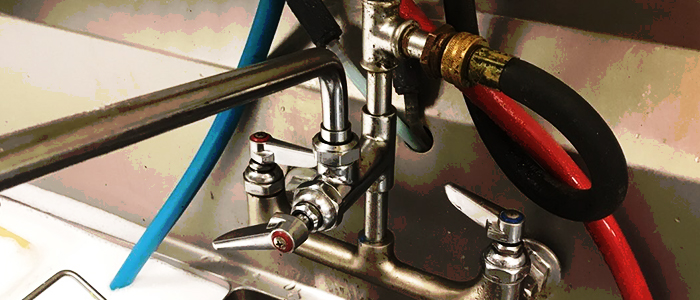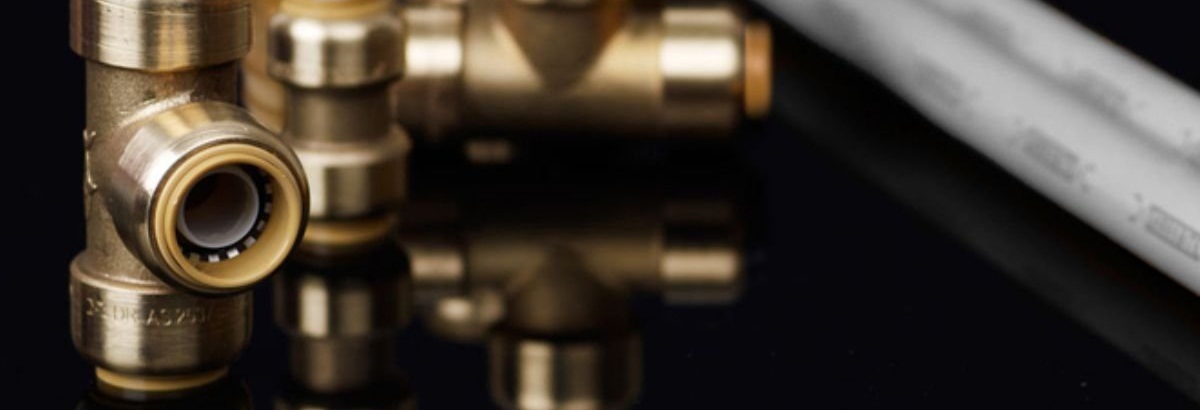Exploring Your Home's Plumbing System Anatomy
Exploring Your Home's Plumbing System Anatomy
Blog Article
What're your concepts on Anatomy of a House: Understanding the Components?

Understanding exactly how your home's pipes system functions is vital for each homeowner. From providing tidy water for drinking, cooking, and showering to securely removing wastewater, a properly maintained pipes system is essential for your family members's health and comfort. In this extensive overview, we'll check out the elaborate network that comprises your home's pipes and deal tips on maintenance, upgrades, and handling typical concerns.
Intro
Your home's pipes system is greater than just a network of pipelines; it's a complicated system that ensures you have accessibility to tidy water and reliable wastewater removal. Recognizing its parts and how they collaborate can aid you prevent pricey repairs and ensure every little thing runs efficiently.
Standard Components of a Pipes System
Pipes and Tubing
At the heart of your pipes system are the pipelines and tubing that bring water throughout your home. These can be made from numerous products such as copper, PVC, or PEX, each with its benefits in terms of longevity and cost-effectiveness.
Fixtures: Sinks, Toilets, Showers, etc.
Fixtures like sinks, commodes, showers, and bathtubs are where water is made use of in your home. Recognizing how these components connect to the pipes system helps in diagnosing issues and planning upgrades.
Valves and Shut-off Factors
Valves regulate the circulation of water in your pipes system. Shut-off shutoffs are essential throughout emergencies or when you require to make repair services, enabling you to isolate parts of the system without interrupting water flow to the whole home.
Water System
Key Water Line
The main water line connects your home to the municipal water or a personal well. It's where water enters your home and is dispersed to various fixtures.
Water Meter and Pressure Regulatory Authority
The water meter actions your water usage, while a stress regulator makes sure that water moves at a risk-free pressure throughout your home's pipes system, stopping damage to pipelines and components.
Cold Water vs. Warm water Lines
Recognizing the distinction between cold water lines, which supply water directly from the main, and warm water lines, which bring warmed water from the hot water heater, assists in troubleshooting and preparing for upgrades.
Water drainage System
Drain Piping and Traps
Drain pipes lug wastewater far from sinks, showers, and bathrooms to the drain or septic system. Catches protect against sewer gases from entering your home and additionally trap particles that might create blockages.
Air flow Pipelines
Air flow pipelines permit air right into the water drainage system, avoiding suction that might reduce water drainage and cause traps to vacant. Proper ventilation is vital for preserving the honesty of your plumbing system.
Relevance of Appropriate Water Drainage
Making certain proper drain prevents back-ups and water damage. Routinely cleaning up drains and maintaining catches can avoid expensive fixings and prolong the life of your plumbing system.
Water Heating System
Kinds Of Water Heaters
Water heaters can be tankless or conventional tank-style. Tankless heating systems warmth water as needed, while containers keep warmed water for immediate usage.
Just How Water Heaters Attach to the Pipes System
Comprehending how hot water heater connect to both the cold water supply and hot water circulation lines helps in detecting problems like not enough hot water or leaks.
Upkeep Tips for Water Heaters
Consistently purging your water heater to eliminate debris, checking the temperature level setups, and inspecting for leaks can extend its life expectancy and improve energy performance.
Typical Pipes Problems
Leaks and Their Causes
Leakages can happen as a result of aging pipelines, loose installations, or high water stress. Addressing leakages promptly prevents water damages and mold development.
Obstructions and Obstructions
Blockages in drains and toilets are usually triggered by flushing non-flushable items or a build-up of oil and hair. Utilizing drainpipe screens and bearing in mind what decreases your drains can stop blockages.
Signs of Pipes Problems to Watch For
Low tide pressure, slow drains pipes, foul odors, or unusually high water bills are indications of possible plumbing issues that need to be dealt with immediately.
Plumbing Upkeep Tips
Regular Evaluations and Checks
Schedule yearly pipes assessments to catch issues early. Try to find indications of leaks, deterioration, or mineral build-up in faucets and showerheads.
Do It Yourself Maintenance Tasks
Basic jobs like cleaning faucet aerators, looking for toilet leaks making use of dye tablets, or protecting exposed pipelines in cold environments can protect against major plumbing problems.
When to Call a Specialist Plumbing Professional
Know when a pipes issue calls for specialist experience. Trying complicated repairs without correct expertise can lead to even more damage and higher repair service prices.
Updating Your Plumbing System
Factors for Updating
Updating to water-efficient fixtures or changing old pipelines can enhance water high quality, reduce water expenses, and enhance the worth of your home.
Modern Plumbing Technologies and Their Advantages
Check out technologies like clever leakage detectors, water-saving toilets, and energy-efficient hot water heater that can conserve cash and reduce ecological effect.
Cost Considerations and ROI
Determine the ahead of time expenses versus long-lasting financial savings when taking into consideration plumbing upgrades. Numerous upgrades pay for themselves with decreased utility expenses and fewer fixings.
Environmental Impact and Conservation
Water-Saving Components and Devices
Mounting low-flow taps, showerheads, and toilets can significantly reduce water usage without giving up efficiency.
Tips for Decreasing Water Use
Straightforward routines like dealing with leakages quickly, taking shorter showers, and running full loads of washing and recipes can save water and lower your energy bills.
Eco-Friendly Pipes Options
Think about sustainable pipes materials like bamboo for flooring, which is durable and green, or recycled glass for counter tops.
Emergency situation Readiness
Steps to Take During a Plumbing Emergency situation
Know where your shut-off shutoffs lie and just how to turn off the supply of water in case of a ruptured pipe or major leak.
Significance of Having Emergency Situation Calls Convenient
Maintain contact information for neighborhood plumbing professionals or emergency situation services readily offered for quick action throughout a pipes crisis.
Do It Yourself Emergency Situation Fixes (When Relevant).
Temporary repairs like using duct tape to spot a leaking pipe or positioning a pail under a leaking tap can reduce damages up until a professional plumbing shows up.
Conclusion.
Comprehending the makeup of your home's plumbing system equips you to keep it successfully, saving money and time on repair work. By complying with normal maintenance routines and remaining notified about modern pipes innovations, you can guarantee your plumbing system operates successfully for several years to find.
HOW YOUR PLUMBING SYSTEM WORKS
Which Pipes Do What?
Blue lines = fresh water supply entering the building
Red lines = hot water supply entering the building
Grey lines = pipes carrying waste away from the building and venting pipes carrying gases away from the building (through the roof)
YOUR MAIN PLUMBING SYSTEMS
There are two main plumbing systems that support your home s basic plumbing needs one that brings clean water into your home, and one that sends dirty water away from your home. Connected to the toilet, bath, shower, and other faucets in your home, these two systems keep your water flowing in the right directions.
ACCESSING FRESH WATER
Fresh and clean water is brought into your home through the main water supply line . Filtered through one pipe, this water is pressured to flow into the various fixtures in your home at any given time.
This water can be sourced from a well located on your property, a pond or river (mostly cottages), or, as in most cases, from the city s municipal water treatment centre. However, it is important to note that water that is untreated, such as the water siphoned from ponds or rivers, may not be safe to drink. Personal water supplies always need to be treated for hardness and contaminants before consumed.
MUNICIPAL WATER SUPPLIES
Improve taste and odour
Remove sediment
Eliminate hardness
Reduce chlorine
COLD WATER SUPPLY VS. HOT WATER SUPPLY
Cold water flows into your home or building through the service line, which then distributes hot or cold water to your fixtures. This line is most commonly run through a central column that runs floor to floor. Hot water runs in short and straight pipes as the longer the pipeline, the more heat that will be lost in the transfer. Having shorter pipes also allows residents to access hot water more quickly.
WASTE WATER SYSTEM
Your wastewater system is divided into two parts pipes that send wastewater away from your home and venting pipes that send sewer gas away from your home. Sewage water travels through pipes that flush the water and waste towards local sewers that are operated and managed by your city or town. Most sewer systems rely on gravity to move the wastewater to where it needs to go.
The further away from your toilet or sink, the larger wastewater pipes become. This allows for waste to be disposed of from various parts of your home or business at once without pipe blockages. The angle and flow of these pipes are also essential for keeping your waste pipes clear of build up.
https://harrisplumbing.ca/how-your-home-plumbing-system-works/

HOW YOUR PLUMBING SYSTEM WORKS
Which Pipes Do What?
YOUR MAIN PLUMBING SYSTEMS
There are two main plumbing systems that support your home s basic plumbing needs one that brings clean water into your home, and one that sends dirty water away from your home. Connected to the toilet, bath, shower, and other faucets in your home, these two systems keep your water flowing in the right directions.
ACCESSING FRESH WATER
Fresh and clean water is brought into your home through the main water supply line . Filtered through one pipe, this water is pressured to flow into the various fixtures in your home at any given time.
This water can be sourced from a well located on your property, a pond or river (mostly cottages), or, as in most cases, from the city s municipal water treatment centre. However, it is important to note that water that is untreated, such as the water siphoned from ponds or rivers, may not be safe to drink. Personal water supplies always need to be treated for hardness and contaminants before consumed.
MUNICIPAL WATER SUPPLIES
COLD WATER SUPPLY VS. HOT WATER SUPPLY
Cold water flows into your home or building through the service line, which then distributes hot or cold water to your fixtures. This line is most commonly run through a central column that runs floor to floor. Hot water runs in short and straight pipes as the longer the pipeline, the more heat that will be lost in the transfer. Having shorter pipes also allows residents to access hot water more quickly.
WASTE WATER SYSTEM
Your wastewater system is divided into two parts pipes that send wastewater away from your home and venting pipes that send sewer gas away from your home. Sewage water travels through pipes that flush the water and waste towards local sewers that are operated and managed by your city or town. Most sewer systems rely on gravity to move the wastewater to where it needs to go.
The further away from your toilet or sink, the larger wastewater pipes become. This allows for waste to be disposed of from various parts of your home or business at once without pipe blockages. The angle and flow of these pipes are also essential for keeping your waste pipes clear of build up.
https://harrisplumbing.ca/how-your-home-plumbing-system-works/
I recently found that review about Understanding Your Home's Plumbing Anatomy while looking around the search engines. In case you liked our blog posting plz don't forget to pass it around. I praise you for your time. Come back soon.
Click Here Report this page